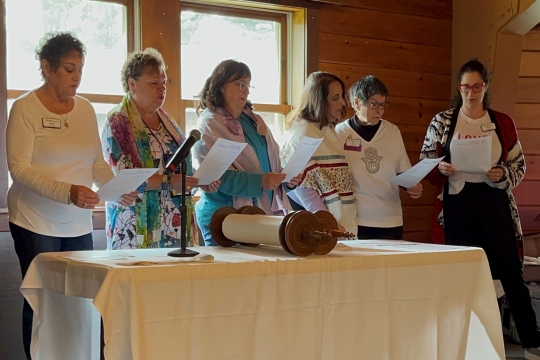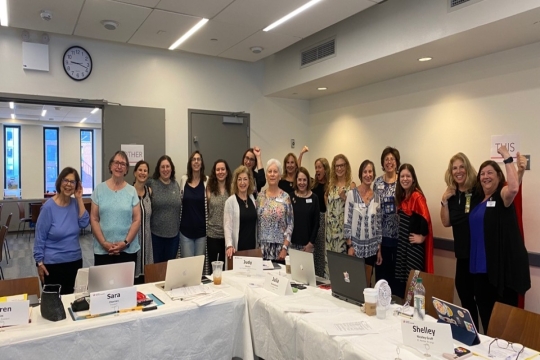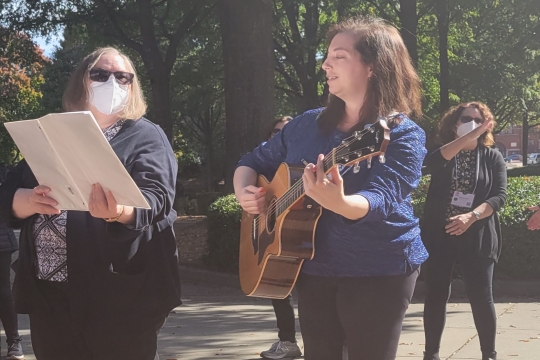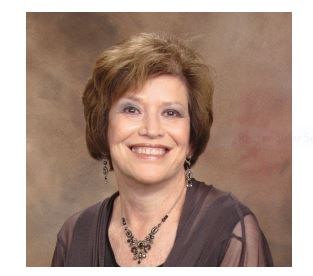
Dear WRJ Friends. How wonderful it was to be together at the Fried Leadership Conference in Charleston, South Carolina, last weekend! For those of you who were unable to participate, please go on Yammer or Facebook, and read your district newsletters or other outlets to view items about the excellent workshops, speakers, worship services and activities. As always, when WRJ women come together, the connections engage and inspire each and all of us!
The rituals we shared at the Fried Leadership Conference, particularly on Shabbat, began with lighting candles. In Jewish ritual, women often light the candles. When we light these candles, it is an intentional and prescribed action, reflecting our external selves. We may not be the high priests or even clergy, the location may not be a home or our sanctuaries, yet we kindle lights creating a glow that reaches upward to G-d and invites G-d into our presence. The light is what we offer as people.
When we gather, we may ask: is G-d really present? Perhaps the light that shines - whether from the Ner Tamid or from our lighted candles – is the presence we seek and what makes us holy. We are expected to ensure that the light is present. We need the light. Our leaders need the inspiration of the light. And so in Charleston, that is how we began our time together to engage and connect – as one, raising our voices in prayer and song. As Jews, it is how we end our week and move into Shabbat.
Last week’s parashah focused on the building and furnishing of the Mishkan. Parashat Tetzaveh now focuses on the making of the priestly garments, in particular, those of the high priest Aaron. Aaron, who will be physically closest to the invisible presence of God in the Holy of Holies, must be clothed in garments as sacred as the materials used to construct the Mishkan. Women are not specifically mentioned in this section. Yet, in Carol Meyers’s introduction to the “Instructions about Priestly Vestments (28:1–43)” (p. 476 of The Torah: A Women’s Commentary), she asserts that “it is likely that [women] were responsible for producing the sacral garments.”
I was inspired by Parashat T’tzaveh, not so much by the section describing the specific directions for the making of priestly garments for the high priest but by the awareness that women probably were tasked with the making of the vestments - garments which are as sacred as the materials used to build the Tabernacle. I was motivated by the likely inclusion of women in that process.
Women have always held the responsibilities for home and family and for participating in numerous supportive activities that are holy. And our WRJ commitments, as women in the Reform Movement, include ensuring our Jewish world by living the values and continuing the traditions as a light unto the world.
May the candles you light to welcome Shabbat and G-d into your presence inspire you in the coming week.
Lindie Henderson is a WRJ Board Member and Pacific District Past President. She is a member of Women of B'nai Israel in Sacramento, CA and is on the WUPJ North American Advisory Board.
Related Posts

Parashat Yom Rishon shel Rosh HaShanah

Cultivating a Culture of Accountability and Belonging


